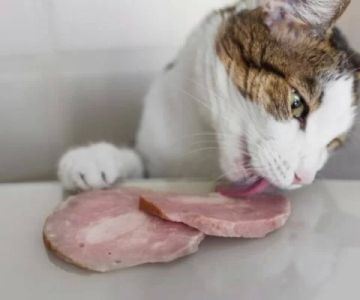Why Fiber is Important for Your Dog's Weight Loss
If you’ve noticed your dog packing on a few extra pounds, you might be wondering how to help them shed that weight in a healthy and sustainable way. The answer might lie in something simple, yet incredibly effective: high-fiber dog food.
As pet owners, we all want our dogs to live a long, healthy life, and maintaining an ideal weight is a big part of that. Obesity in dogs can lead to numerous health issues, including joint problems, diabetes, and heart disease. That’s why it’s crucial to provide them with the proper nutrition, and fiber plays a key role in a weight-loss diet for dogs.
Fiber-rich foods help your dog feel full without adding unnecessary calories, which is essential when you're trying to manage their weight. The best part? Fiber also promotes healthy digestion, helping your dog absorb nutrients more efficiently while keeping them satisfied longer.
What is High-Fiber Dog Food?
High-fiber dog food is formulated to include a significant amount of fiber, typically from vegetables, grains, or legumes. Fiber is an indigestible part of food that helps regulate your dog's digestion and promotes a sense of fullness. For dogs needing to lose weight, high-fiber food can be a game-changer.
These foods often contain ingredients like sweet potatoes, peas, brown rice, and pumpkin, which are rich in fiber and low in fat. Fiber works by slowing down the digestion process, making your dog feel full for longer periods, reducing the temptation to overeat.
1. How Fiber Helps with Weight Loss
One of the primary reasons high-fiber food works so well for weight loss is its ability to expand in your dog’s stomach, making them feel fuller for longer. This can significantly reduce their food intake without making them feel deprived.
Additionally, fiber slows the absorption of nutrients, which helps control blood sugar levels. This is particularly important for dogs with insulin resistance or those at risk for diabetes. The fiber keeps your dog’s energy levels stable and prevents unhealthy spikes and crashes in their blood sugar levels, making them feel more energetic and less likely to snack unnecessarily.
2. Types of Fiber in Dog Food
There are two main types of fiber found in dog food: soluble fiber and insoluble fiber. Both play crucial roles in your dog’s digestive health and weight loss.
Soluble fiber dissolves in water and forms a gel-like substance in the stomach. This type of fiber is excellent for managing blood sugar and slowing down the digestion process, which can help your dog feel full for longer. Common sources of soluble fiber include oatmeal, barley, and pumpkin.
Insoluble fiber does not dissolve in water and helps to add bulk to your dog’s stool, promoting regular bowel movements. It also helps prevent constipation and supports a healthy gut. Sources of insoluble fiber include wheat bran and cellulose.
When looking for high-fiber dog food, it’s important to find a balanced blend of both types of fiber to support overall digestive health and weight loss.
Choosing the Right High-Fiber Dog Food
Now that you understand the role of fiber in your dog’s diet, let’s talk about how to choose the best high-fiber dog food for weight loss. With so many options available, it can be overwhelming, but the key is to look for a balanced, nutritious formula that fits your dog’s specific needs.
3. Check the Ingredient List
The first step in selecting the right dog food is to check the ingredient list. Look for whole, natural ingredients like sweet potatoes, peas, pumpkin, and brown rice. These foods are not only high in fiber but also provide essential vitamins and minerals that support your dog’s overall health.
Avoid dog foods with too many fillers, such as corn, soy, and by-products, as these can add unnecessary calories and may not provide the same nutritional benefits as whole foods.
4. Consider Your Dog’s Health Needs
Not all dogs are the same, so it’s important to consider your dog’s specific health needs. For example, older dogs or dogs with certain medical conditions may need a special formula that’s easier to digest. If your dog has food allergies, be sure to select a high-fiber food that avoids common allergens like chicken or beef.
If you’re unsure which food is best for your dog, it’s always a good idea to consult with your veterinarian. They can recommend a high-fiber food that’s tailored to your dog’s unique needs and help you set up a proper feeding schedule to ensure your dog’s weight loss journey is successful.
5. Look for a Balanced Calorie Count
High-fiber dog food should not only help with weight loss, but it should also provide balanced nutrition. Be sure to choose a food that has a balanced ratio of protein, fat, and carbohydrates to meet your dog’s needs while promoting a healthy weight. You should aim for food with high-quality protein sources like chicken, turkey, or fish to support lean muscle mass while they’re losing weight.
How Much to Feed Your Dog
Once you’ve chosen the right high-fiber food for weight loss, it’s important to follow the recommended feeding guidelines. Overfeeding, even with healthy food, can still lead to weight gain. Keep an eye on your dog’s weight and adjust their portion sizes accordingly. Your veterinarian can help you determine how much to feed your dog based on their size, breed, and weight loss goals.
When transitioning to a new food, do so gradually. Mix the new high-fiber food with their current food over a period of 7 to 10 days to avoid digestive upset. This will also help your dog get used to the new taste and texture of their food.
Additional Tips for Supporting Your Dog’s Weight Loss Journey
In addition to switching to high-fiber dog food, there are several other steps you can take to help your dog lose weight and maintain a healthy body condition.
- Regular Exercise: Make sure your dog gets plenty of physical activity. Regular walks, playtime, and mental stimulation are essential for weight loss and overall health.
- Portion Control: Be mindful of treats and snacks. High-calorie treats can quickly add up and derail your dog’s weight loss efforts. Opt for low-calorie treats or use their regular kibble as rewards.
- Consistency: Weight loss takes time. Be patient with your dog and stick to their feeding and exercise routine. Gradual, steady progress is the best way to ensure lasting results.
Helping your dog lose weight and maintain a healthy body condition is a rewarding experience. By incorporating high-fiber dog food into their diet and following a balanced routine, you can give your furry friend the best chance at living a long, happy, and healthy life.












